Analysis of the landslide movement characteristics in Biyi Village, Ganluo County, Sichuan Province, through SPH numerical simulation
-
摘要:
四川甘洛县比依市村受连续强降雨影响下形成滑坡灾害,造成大量财产损失。文章以该滑坡为例,通过工程地质条件探究了比依市村滑坡产生的原因,采用光滑粒子流体动力学(smoothed particle hydrodynamics,SPH)方法对滑坡全过程进行真三维数值模拟,对滑坡关键位置进行位移、速度监测,结果表明:(1)不良地质和长历时、高强度的持续降雨是滑坡的主要诱发因素;(2)SPH方法得到的位移、速度等运动特征参数与实际勘察效果基本一致,具有较好的可靠性;(3)该滑坡是由于滑坡后缘推动滑坡中部导致整体下错,前缘受阻形成鼓胀区,最终破坏模式表现为推移式破坏;(4)比依市村滑坡仍处于蠕变阶段,利用SPH模拟大变形的优势可以为此类灾害的机理研究和工程防治提供新的研究思路。
Abstract:Due to continuous heavy rainfall, landslides were triggered in Biyi Village, Ganluo County, Sichuan Province, resulting in significant property losses. This paper explores the causes of the landslide in Biyi Village by analyzing the local engineering geological conditions, and conducts a true three-dimensional numerical simulations of the entire landslide process using the smoothed particle hydrodynamics (SPH) method. Displacement and velocity monitoring were performed at key positions of the landslide. The results indicate that: (1) unfavorable geological conditions and long-duration, high-intensity continuous rainfall were the main triggering factors of the landslide. (2) The SPH method obtained displacement, velocity, and other motion-related parameters that closely aligned with the actual survey results, demonstrating its good reliability and accuracy. (3) The landslide was caused by the sliding of the rear edge of the landslide, pushing the middle part of the landslide, resulting in overall downward movement and blockage at the front edge, ultimately leading to the formation of a bulging zone. The final landslide failure mode was characterized as a translational slide. (4) The Biyi Village landslide is still in the creep stage. Utilizing the capabilities of the SPH method in simulating large deformations opens up new avenues for research in understanding the mechanisms and engineering strategies for the prevention of similar disasters.
-
0. 引 言
2019年6月至8月,四川省甘洛县在短时间内接连遭受数次严重暴雨灾害[1 − 2]。持续强降雨引发了大面积山洪、滑坡、泥石流灾害,比依市村滑坡从2019年8月3日降雨后发生初始变形,房屋出现裂缝,房屋基础局部垮塌,部分房屋院落地面拉裂,村道拉裂破坏。受2020年8月30日强降雨影响,该滑坡于9月3日再次发生剧烈滑动,滑坡范围扩大、向坡下扩展,形成一个大的滑坡体。目前该滑坡还处于持续蠕滑变形中,后期在降雨作用下,存在继续扩大变形的可能[3],共威胁31户134人,且滑坡还会破坏坡体上4.67×104 m2耕地,共计威胁资产500万元。
随着近年来数值模拟方法和计算机性能的飞跃,基于有限差分法[4 − 6](finite difference method,FDM)、有限单元法[7](finite element method,FEM)等方法在滑坡研究上取得极大进步,对滑坡全过程运动破坏机理的研究也逐渐从二维平面转为真实三维地形[8 − 11]。传统的数值模拟方法虽然精度较高,但滑坡是一个存在滑动、平移、转动的复杂过程[12 − 13],其过大的变形会导致有限元网格的畸变,使计算结果失真。为了克服这一困难,一些新兴的无网格法:点物质法[14 − 15](material point method,MPM)、光滑粒子流体动力学法[16 − 18](SPH)、无网格伽辽金法[19](element free Galerkin method,EFG)等被广泛应用于滑坡的研究中,均得到了较好的效果,为后人提供了理论基础与经验参考。
基于此,本文以比依市村滑坡为例,通过采用现场地质调绘、现场监测并结合数值模拟等方法,详细分析了滑坡的诱发因素,并结合大型商业软件ABAQUS模拟研究比依市村滑坡的破坏过程,采用真实地形建模方法,引入SPH方法,对滑坡不同关键位置进行位移、速度监测,以期为比依市村滑坡及该类滑坡后期工程防治方案等提供可靠依据。
1. 滑坡概况
甘洛县位于四川盆地西部,居凉山彝族自治州北部,北隔大渡河与汉源县相望,东临峨边县、金口河工农区;南连美姑、越西两县;西与石棉、越西接壤。滑坡区位于甘洛县中部,属构造侵蚀中单面山宽谷地貌区,由于受横断山脉的褶皱、隆起与断裂,加上河流急剧的切割作用等因素的影响,因而境内山峦起伏、沟壑纵横,河段与两侧山地高差悬殊,谷壁陡峭,河床狭窄,显现出典型的高山峡谷地貌特征。
比依村滑坡所在斜坡区总体地势东高西低,总体为较陡的斜坡地貌,斜坡总体坡向275°,区内基岩为中侏罗统新村组(J2x)钙质泥岩、粉砂,上覆昔格达组黏土岩及滑坡堆积等。滑坡处于甘洛河右岸陡坡与分水岭山峰间相对较缓的斜坡区,微地貌上为浅缓的槽谷(图1),滑坡区总体为较为开阔、顺直的槽谷、缓坡地貌,平均宽度150 m、长度约700 m,滑坡区面积约9.0×104 m2。滑坡后缘右侧以剪切裂缝为界,为陡坡、局部呈陡坎状,坡度25°~40°,滑壁高6~8 m并导致一段长35 m村道全毁;滑坡左侧以剪切裂缝和冲沟为界,为冲沟、右侧为低矮的山脊,形成滑壁高约2~3 m;滑坡中部发育浅丘,高度10~15 m;前缘为陡坡,坡度30°~35°。滑坡后缘高程1291 m、前缘高程1186 m,相对高差105 m,滑坡区平均坡度20°,滑坡平面形态呈“月牙”状。比依市村滑坡导致大量房屋见图2(a)、图2(d),耕地见图2(c),村道、既有公路(图2(b))遭到损毁,滑坡全貌及局部形态如图3所示。
根据滑坡成因及钻孔揭露滑体情况,滑体平均厚度8.7 m,滑坡体积约78.3×104m3,滑坡规模为中型。滑坡滑体主要由斜坡上的残坡积物组成,表层为薄层耕作土层,以粉质黏土为主,下层土体以黏性土为主,粉土次之,滑床为上新统昔格达组(N2x)黄褐色粉砂岩及紫红色黏土岩,节理裂隙较为发育,为水体向下渗流提供了良好的通道,滑坡工程地质剖面图2-2’如图4所示。
比依市村滑坡的发生是其内外因共同作用的结果,内部原因主要有以下四点:①滑坡区纵向上呈阶梯状斜坡地貌,地形临空条件发育,地形临空条件发育为滑坡发育提供了有利的地形条件;②滑坡为缓倾顺向坡结构,且岩层倾角小于斜坡坡度,为易发生滑坡的斜坡结构类型;③斜坡区表层分布第四系全新统松散岩类残坡积粉质黏土地层,出露基岩为上新统昔格达组(N2x)粉砂岩,属极软岩类。松散岩类结构松散,属易滑地层,不利条件下易沿基覆界面发生滑动变形。而极软岩类粉砂岩,层理近水平,裂隙较发育,泥质胶结,固结状态差,遇水易软化、崩解,抗风化能力差,遇水后其力学性质指标迅速降低,因此该地层结构组成的边坡易发生滑坡、边坡变形等不良地质现象;④在水文地质方面,滑坡区由于汇水面积大,且村民生活生产用水无序排放,使坡体局部区域极为富水,另基岩风化带裂隙水也较丰富,滑坡区主要为地下水径流排泄区,地下水活动较为强烈,特别是当地下水沿基覆界面径流,或当基岩裂隙水水位抬升,裂隙水压力增大时,常成为引起滑坡变形的重要因素。由于该区具备上述四个方面滑坡发育的基础地质条件,一旦降雨等不利因素具备,即引发滑坡地质灾害的发生。据调查,2019年汛期以来,甘洛县新市坝镇持续降雨,降雨量大,持续时间长。在这种长历时、高强度的降雨作用下,孔隙水压力上升,岩土体有效应力降低,岩土体c、φ值急剧减小,抗剪强度严重降低。孔隙水使滑体重度增大,且明显增大了下滑力,从而引发滑坡后缘下错变形。
2. 数值模拟
2.1 SPH方法简介
光滑粒子动力学方法(smoothed particle hydrodynamics,SPH)是一种拉格朗日无网格粒子法,其不仅避免了传统有限元网格重构和畸变等问题,还可以自然追踪运动界面,因此在模拟大变形仿真方面具有很强的优势。岩土体中常用的本构关系M-C[20 − 22](Mohr-Coulomb)、D-P[23](Drucker-Prager)、Cam-Clay[24 − 25]、Binghams[26]等均能适用于SPH法。由于不需要网格划分和小变形假设的特性,其可以不受到网格畸变的影响,每个生成的粒子被单独赋予状态变量(质量、速度、位移、应力、应变等)和材料属性(重度、弹性模量、泊松比、内摩擦角、剪胀角、黏聚力等)。目前SPH法在高速远程滑坡模拟、灾害防治预测已有部分研究成果[16 − 18]。
核近似(kernel approximation)与粒子近似(particle approximation)是SPH的核心方法,通过将连续介质离散为SPH粒子,分别计算分析粒子受力与运动状态。核近似的一般形式为:
$$ f(x) \approx \int_\Omega f \left( {x'} \right)W\left( {x - x',h} \right){\text{d}}x' $$ (1) 式中:
$W(x - x',h)$ 被称为光滑核函数(smoothing kernel function),或简称为核(kernel),基点粒子的变量值可以通过其影响区域内相邻粒子的集合的贡献值和来近似;h是定义光滑核函数影响区域的光滑长度,其决定了有多少粒子可以影响特定点的插值;Ω为x的支持域。SPH方法是基于移动粒子的求积公式,在上式中$f(x)$ 近似可以用离散形式定义每个粒子的物理量由相邻粒子基于核函数的插值和确定。$$ f(x) = \sum\limits_{j = 1}^N {\frac{{{m_j}}}{{{\rho _j}}}} f\left( {{x_j}} \right)W\left( {x - {x_j},h} \right) $$ (2) 式中:
${m_j}$ 与${\rho _j}$ ——粒子$j$ 的质量与密度;$N$ ——粒子在$x$ 影响域内的粒子总数。SPH方法将每个元素点称为基点,所有计算参数和结果信息都记录在基点上。有连续性方程及动量方程:
$$ \frac{{{\mathrm{d}}{\rho _i}}}{{{\mathrm{d}}t}} = \sum\limits_{j = 1}^N {{m_j}} v_{ij}^\beta \frac{{\partial {W_{ij,\beta }}}}{{\partial x_i^\beta }} $$ (3) $$ \frac{{{\mathrm{d}}v_i^\alpha }}{{{\mathrm{d}}t}} = \sum\limits_{j = 1}^N {{m_j}} \left( {\frac{{\sigma _i^{\alpha \beta }}}{{\rho _i^2}} + \frac{{\sigma _j^{\alpha \beta }}}{{\rho _j^2}} + {T_{ij}}} \right)\frac{{\partial {W_{ij,\beta }}}}{{\partial x_i^\beta }} $$ (4) 式中:
$\rho $ ——基点密度;t——计算时间;
m——粒子质量;
v——基点速度;
x——基点的坐标;
T——人工黏度系数,其作用为降低计算过程中的非物理振荡;
W——光滑核函数。
2.2 模型建立
通过提取比依市村滑坡等高线、高程点数据建立真实三维滑坡模型如图5,模型中滑床采用有限元网格四面体C3D4单元,滑体采用SPH粒子PC3D单元,共867184个SPH粒子单元。该模型长(x方向)984.4 m,宽(y方向)550.6 m,高(z方向)245.9 m。滑体与滑床均采用摩尔库伦(M-C)本构模型。
通过室内试验和参数反演分析相结合的方法确定得到滑坡岩土体物理力学参数,因昔格达组岩体饱水,且属强风化,直接做岩石试验较困难,本次试验将所取的昔格达组粉砂岩和黏土岩按土工试验处理,岩石的参数采用类比获得如表1所示,滑带通过罚函数的方式实现,其摩擦系数f通过下式计算[27]:
表 1 岩土体参数Table 1. Rock and soil mass parameters名称 密度/(kg·m−3) 弹性模量/MPa 泊松比 黏聚力/kPa 内摩擦角/(°) 滑床 1846 20000 0.25 26 28 滑体 1846 80 0.35 14 18 滑带 - - - 7.51 10.74 $$ f = \tan \varphi + \frac{{cL}}{{W\sin \alpha }} $$ (5) 式中:
$\varphi $ ——滑带土内摩擦角/(°);$c$ ——滑带土黏聚力/Pa;L——滑坡长度/m;
W——滑体重力/N;
$\alpha $ ——滑体坡角/(°)。为了探究滑坡运动特征与时空演化,此次模拟在滑坡前缘、滑坡后缘、滑坡左右两侧共设置了4组监测点,每组监测点三个特征粒子,分别监测滑坡过程中滑体的速度、位移与时间的关系。
2.3 运动过程及分析
利用SPH方法计算得到的比依市村滑坡数值模拟的全过程如图6所示。
模拟结果表明:比依市村滑坡全程约5 s,滑坡在1 s内动能达到最大,如图7所示,随后滑坡中部与滑坡右侧坡壁开始错动,滑坡右侧后缘开始出现拉裂缝,滑坡中部物质塌落并开始在前缘堆积,最终形成鼓胀区。第2 秒开始,滑坡整体能量开始消散,到第4秒时动能已消散殆尽,滑坡开始逐渐趋于稳定,并在第5秒时,最终呈现出与现场勘察报告吻合的三个滑坡区域H1、H2、H3,如图8所示:在H1区域,滑坡左侧沉降约为2.8 m,在H2区域后缘拉裂缝沉降约为6.6 m,在H3区域前缘鼓胀区处,土体隆起为0.7~2 m。
滑坡前缘、滑坡后缘、滑坡左侧、滑坡右侧三个特征粒子的位移、速度与时间的关系曲线如图9—12所示,整体上滑坡各部除滑坡后缘外速度几乎同时在第0.8秒时达到峰值,随后趋于静止,滑坡后缘粒子峰值速度持续时间最长,滑坡后缘运动时间与速度均大于其余滑坡各部位,表明比依市村滑坡是在滑坡后缘持续推动下造成的。最终滑坡前缘位移峰值约为1.6 m,速度峰值约为2.2 m/s,滑坡后缘位移峰值约为7 m,速度峰值约为3.5 m/s,滑坡中部(左右两侧)位移峰值为1.2~2.23 m,速度峰值为2.4~2.8 m/s。
滑坡运动特征参数从后缘到前缘呈现明显地从大到小的分布规律,整个滑坡破坏模式表现为典型的后部推移式破坏,即在H1、H2的推动加载下导致的滑坡。滑坡总历时5 s,整体水平运动距离约为6 m,SPH数值模拟结果与实际变形情况基本一致。
3. 结论
(1)比依市村滑坡是由多种因素共同造成的,其中地形临空条件发育,缓倾顺向坡结构,不良地质,长历时、高强度的持续降雨是滑坡的主要诱发因素。
(2)利用SPH方法得到的滑坡全过程模拟中,对于滑坡运动距离,滑坡运动趋势,滑体前缘、后缘的鼓胀高度与拉裂缝深度,滑体左侧、右侧的错动距离均有较好的模拟效果,证明SPH方法模拟滑坡具有较好的准确度。
(3)滑坡中部与后缘陡坡处最早开始错动,形成贯通张拉裂缝,随后H1、H2滑坡继续推动H1滑坡,在前缘处形成鼓胀区,导致整个滑坡破坏模式表现为推移式破坏,与现场勘查结果基本一致。
(4)目前比依市村滑坡依然处于蠕变阶段,在降雨条件下或其它外界因素干扰作用下,产生进一步向前滑移变形破坏的可能性较大。若滑坡继续滑移,滑坡还可能向后扩展,导致滑坡后缘及后部两侧房屋损坏。因此利用SPH模拟大变形的优势可以预测滑坡在极端条件下造成的危害,可以为此类灾害的机理研究和工程防治提供新的研究思路。
-
表 1 岩土体参数
Table 1 Rock and soil mass parameters
名称 密度/(kg·m−3) 弹性模量/MPa 泊松比 黏聚力/kPa 内摩擦角/(°) 滑床 1846 20000 0.25 26 28 滑体 1846 80 0.35 14 18 滑带 - - - 7.51 10.74 -
[1] 郑琅,张欣,王立娟. 四川省甘洛县山体滑坡应急调查与成因机制分析[J]. 人民长江,2022,53(8):117 − 122. [ZHENG Lang,ZHANG Xin,WANG Lijuan. Emergency investigation and formation mechanism of landslide in Ganluo County,Sichuan Province[J]. Yangtze River,2022,53(8):117 − 122. (in Chinese with English abstract)] ZHENG Lang, ZHANG Xin, WANG Lijuan . Emergency investigation and formation mechanism of landslide in Ganluo County, Sichuan Province[J]. Yangtze River,2022 ,53 (8 ):117 −122 . (in Chinese with English abstract)[2] 范刚,聂锐华,陈骎,等. 2020年甘洛县黑西洛沟山洪-滑坡-堰塞湖灾害链成灾机理分析[C]//. 中国水利学会2021学术年会论文集第二分册,2021:291 − 296. [FAN Gang,NIE Ruihua,CHEN Qin,et al. An analysis of the disaster mechanism of the Mountain flood,landslides and barrier Lake disaster chain in Hexiluogou,Ganluo County,in 2020[C]//China water conservancy society 2021 academic conference proceedings of the second volume,2021:291 − 296. (in Chinese)] FAN Gang, NIE Ruihua, CHEN Qin, et al. An analysis of the disaster mechanism of the Mountain flood, landslides and barrier Lake disaster chain in Hexiluogou, Ganluo County, in 2020[C]//China water conservancy society 2021 academic conference proceedings of the second volume, 2021: 291 − 296. (in Chinese)
[3] ZHOU Jinxing,ZHU Chunyun,ZHENG Jingming,et al. Landslide disaster in the loess area of China[J]. Journal of Forestry Research,2002,13(2):157 − 161. DOI: 10.1007/BF02857244
[4] HUANG Da,MENG Qiujie,SONG Yixiang,et al. Dynamic process analysis of the Niumiangou landslide triggered by the Wenchuan earthquake using the finite difference method and a modified discontinuous deformation analysis[J]. Journal of Mountain Science,2021,18(4):1034 − 1048. DOI: 10.1007/s11629-020-6188-y
[5] LIU Bo, HU Xiewen, HE Kun, et al. The starting mechanism and movement process of the coseismic rockslide:A case study of the Laoyingyan rockslide induced by the “5•12” Wenchuan earthquake[J]. Journal of Mountain Science,2020,17(5):1188 − 1205.
[6] BERNANDER S,KULLINGSJÖ A,GYLLAND A S,et al. Downhill progressive landslides in long natural slopes:triggering agents and landslide phases modeled with a finite difference method[J]. Canadian Geotechnical Journal,2016,53(10):1565 − 1582. DOI: 10.1139/cgj-2015-0651
[7] 邹德兵,丁刚,熊瑶,等. 贵州响水水库下汤章滑坡稳定性研究[J]. 水利水电技术,2020,51(增刊1):250 − 255. DOI:10.13928/j.cnki.wrahe. [ZOU Debing,DING Gang,XIONG Yao,et al. Study on the stability of Xiatangzhang landslide in Xiangshui Reservoir,Guizhou Province [J]. Water Resources and Hydropower Engineering,2020(sup 1):250 − 255. (in Chinese with English abstract)] ZOU Debing, DING Gang, XIONG Yao, et al. Study on the stability of Xiatangzhang landslide in Xiangshui Reservoir, Guizhou Province [J]. Water Resources and Hydropower Engineering, 2020(sup 1): 250 − 255. (in Chinese with English abstract) DOI: 10.13928/j.cnki.wrahe.2020.S1.044
[8] 王伟,王卫,戴雄辉. 四川美姑拉马阿觉滑坡复活特征与影响因素分析[J]. 中国地质灾害与防治学报,2022,33(4):9 − 17. [WANG Wei,WANG Wei,DAI Xionghui. Analysis of reactivated characteristics and influencing factors of the Lamajue landslide in Meigu County of Sichuan Province[J]. The Chinese Journal of Geological Hazard and Control,2022,33(4):9 − 17. (in Chinese with English abstract)] WANG Wei, WANG Wei, DAI Xionghui . Analysis of reactivated characteristics and influencing factors of the Lamajue landslide in Meigu County of Sichuan Province[J]. The Chinese Journal of Geological Hazard and Control,2022 ,33 (4 ):9 −17 . (in Chinese with English abstract)[9] 张家勇,邹银先,杨大山. 基于PFC3D的鱼鳅坡滑坡运动过程分析[J]. 中国地质灾害与防治学报,2021,32(4):33 − 39. [ZHANG Jiayong,ZOU Yinxian,YANG Dashan. Analysis of Yuqiupo landslide motion process based on PFC3D[J]. The Chinese Journal of Geological Hazard and Control,2021,32(4):33 − 39. (in Chinese with English abstract)] ZHANG Jiayong, ZOU Yinxian, YANG Dashan . Analysis of Yuqiupo landslide motion process based on PFC3D[J]. The Chinese Journal of Geological Hazard and Control,2021 ,32 (4 ):33 −39 . (in Chinese with English abstract)[10] 王明辉, 曹熙平, 谯立家. 危岩体精细调查与崩塌过程三维场景模拟——以西南某水电站高边坡为例[J]. 中国地质灾害与防治学报,2023,34(6):86 − 96. [WANG Minghui, CAO Xiping, QIAO Lijia. Comprehensive analysis of hazardous rock mass and simulation of potential rockfall processes using 3D terrain model: A case study of the high cut slope near damsite of a hydropower station in southern China[J]. The Chinese Journal of Geological Hazard and Control,2023,34(6):86 − 96. (in Chinese with English abstract)] DOI: 10.16031/j.cnki.issn.1003-8035.2021.01.03 WANG Minghui, CAO Xiping, QIAO Lijia . Comprehensive analysis of hazardous rock mass and simulation of potential rockfall processes using 3D terrain model: A case study of the high cut slope near damsite of a hydropower station in southern China[J]. The Chinese Journal of Geological Hazard and Control,2023 ,34 (6 ):86 −96 . (in Chinese with English abstract) DOI: 10.16031/j.cnki.issn.1003-8035.2021.01.03[11] 张龙,唐辉明,熊承仁,等. 鸡尾山高速远程滑坡运动过程PFC3D模拟[J]. 岩石力学与工程学报,2012,31(增刊1):2601 − 2611. [ZHANG Long,TANG Huiming,XIONG Chengren,et al. Movement process simulation of high-speed long-distance Jiweishan landslide with PFC3D[J]. Chinese Journal of Rock Mechanics and Engineering,2012,31(Sup 1):2601 − 2611. (in Chinese with English abstract)] ZHANG Long, TANG Huiming, XIONG Chengren, et al . Movement process simulation of high-speed long-distance Jiweishan landslide with PFC3D[J]. Chinese Journal of Rock Mechanics and Engineering,2012 ,31 (Sup 1 ):2601 −2611 . (in Chinese with English abstract)[12] 丛凯, 魏洁, 杨亚兵, 等. 基于坡表变形分析与降雨响应模拟的立节北山滑坡运动特征[J]. 地质科技通报,2022,41(6):54 − 65. [CONG Kai, WEI Jie, YANG Yabing, et al. Investigation of the kinematic characteristic of Lijie Beishan landslide through surface displacement monitoring and rainfall response numerical simulation[J]. Bulletin of Geological Science and Technology,2022,41(6):54 − 65. (in Chinese with English abstract)] CONG Kai, WEI Jie, YANG Yabing, et al . Investigation of the kinematic characteristic of Lijie Beishan landslide through surface displacement monitoring and rainfall response numerical simulation[J]. Bulletin of Geological Science and Technology,2022 ,41 (6 ):54 −65 . (in Chinese with English abstract)[13] 廖德武, 郑冰, 杜艳松, 等. 兴仁“6•10” 彭家洞高速滑坡运动特征与形成机理[J]. 地质科技通报,2022,41(6):66 − 76. [LIAO Dewu, ZHENG Bing, DU Yansong, et al. Movement characteristics and formation mechanism of the “6•10” Pengjiadong high speed landslide in Xingren[J]. Bulletin of Geological Science and Technology,2022,41(6):66 − 76. (in Chinese with English abstract)] LIAO Dewu, ZHENG Bing, DU Yansong, et al . Movement characteristics and formation mechanism of the “6•10” Pengjiadong high speed landslide in Xingren[J]. Bulletin of Geological Science and Technology,2022 ,41 (6 ):66 −76 . (in Chinese with English abstract)[14] 张巍,史卜涛,施斌,等. 土质滑坡运动全过程物质点法模拟及其应用[J]. 工程地质学报,2017,25(3):815 − 823. [ZHANG Wei,SHI Butao,SHI Bin,et al. Material point method for Run-out process simulation of soil landslides and application[J]. Journal of Engineering Geology,2017,25(3):815 − 823. (in Chinese with English abstract)] DOI: 10.13544/j.cnki.jeg.2017.03.029 ZHANG Wei, SHI Butao, SHI Bin, et al . Material point method for Run-out process simulation of soil landslides and application[J]. Journal of Engineering Geology,2017 ,25 (3 ):815 −823 . (in Chinese with English abstract) DOI: 10.13544/j.cnki.jeg.2017.03.029[15] 王升,曾鹏,李天斌,等. 土质滑坡失稳、运动及冲击压力物质点法模拟研究[J]. 工程地质学报,2022,30(4):1362 − 1370. [WANG Sheng,ZENG Peng,LI Tianbin,et al. Initiation,movement and impact simulation of soil land-slide with material point method[J]. Journal of Engineering Geology,2022,30(4):1362 − 1370. (in Chinese with English abstract)] WANG Sheng, ZENG Peng, LI Tianbin, et al . Initiation, movement and impact simulation of soil land-slide with material point method[J]. Journal of Engineering Geology,2022 ,30 (4 ):1362 −1370 . (in Chinese with English abstract)[16] 胡嫚,谢谟文,王立伟. 基于弹塑性土体本构模型的滑坡运动过程SPH模拟[J]. 岩土工程学报,2016,38(1):58 − 67. [HU Man,XIE Mowen,WANG Liwei. SPH simulations of post-failure flow of landslides using elastic-plastic soil constitutive model[J]. Chinese Journal of Geotechnical Engineering,2016,38(1):58 − 67. (in Chinese with English abstract)] DOI: 10.11779/CJGE201601005 HU Man, XIE Mowen, WANG Liwei . SPH simulations of post-failure flow of landslides using elastic-plastic soil constitutive model[J]. Chinese Journal of Geotechnical Engineering,2016 ,38 (1 ):58 −67 . (in Chinese with English abstract) DOI: 10.11779/CJGE201601005[17] DAI Zili. 3D numerical modeling using smoothed particle hydrodynamics of flow-like landslide propagation triggered by the 2008 Wenchuan earthquake[J]. Engineering Geology,2014,180:21 − 33. DOI: 10.1016/j.enggeo.2014.03.018
[18] HUANG Yu,ZHANG Weijie,XU Qiang,et al. Run-out analysis of flow-like landslides triggered by the Ms 8.0 2008 Wenchuan earthquake using smoothed particle hydrodynamics[J]. Landslides,2012,9(2):275 − 283. DOI: 10.1007/s10346-011-0285-5
[19] PRAVEEN KUMAR R,DODAGOUDAR G R. Meshfree analysis of two-dimensional contaminant transport through unsaturated porous media using EFGM[J]. International Journal for Numerical Methods in Biomedical Engineering,2010,26(12):1797 − 1816. DOI: 10.1002/cnm.1266
[20] GOODIN C, PRIDDY J D. Comparison of SPH simulations and cone index tests for cohesive soils[J]. Journal of Terramechanics,2016,66:49 − 57.
[21] LIANG Dongfang,HE Xuzhen. A comparison of conventional and shear-rate dependent Mohr-Coulomb models for simulating landslides[J]. Journal of Mountain Science,2014,11(6):1478 − 1490. DOI: 10.1007/s11629-014-3041-1
[22] BUI H H, SAKO K, FUKAGAWA R. Numerical simulation of soil–water interaction using smoothed particle hydrodynamics (SPH) method[J]. Journal of Terramechanics,2007,44(5):339 − 346. DOI: 10.1016/j.jterra.2007.10.003
[23] GUO W B,SUN Z W,WANG C S. Slope stability numerical calculation using geotechnical strength yield criterion and sph instability criterion analysis method. Fresenius environmental bulletin. 2020,29(7A):5739 − 5745.
[24] WANG Haibin, YAN Fei, ZHANG Liwei, et al. Mechanism and flow process of debris avalanche in mining waste dump based on improved SPH simulation[J]. Engineering Failure Analysis,2022,138:106345.
[25] FÁVERO NETO A H,ASKARINEJAD A,SPRINGMAN S M,et al. Simulation of debris flow on an instrumented test slope using an updated Lagrangian continuum particle method[J]. Acta Geotechnica,2020,15(10):2757 − 2777. DOI: 10.1007/s11440-020-00957-1
[26] DAI Zili, HUANG Yu, CHENG Hualin, et al. 3D numerical modeling using smoothed particle hydrodynamics of flow-like landslide propagation triggered by the 2008 Wenchuan earthquake[J]. Engineering Geology,2014,180:21 − 33.
[27] 费康,张建伟. ABAQUS在岩土工程中的应用[M]. 北京:中国水利水电出版社,2010. [FEI Kang,ZHANG Jianwei. Application of ABAQUS in geotechnical engineering[M]. Beijing:China Water & Power Press,2010. (in Chinese)] FEI Kang, ZHANG Jianwei. Application of ABAQUS in geotechnical engineering[M]. Beijing: China Water & Power Press, 2010. (in Chinese)
-
期刊类型引用(3)
1. 霍子豪,张仕林,胡卸文,谢维维,唐健峰,贺旭荣,王文沛. 基于固液耦合的滑坡碎屑流侵蚀流化机理研究. 水文地质工程地质. 2025(02): 138-149 .  百度学术
百度学术
2. 任恩,姚巍,刘展雄. 甘洛县某滑坡治理工程局部失效简况及加固措施. 四川地质学报. 2024(S1): 107-110 .  百度学术
百度学术
3. 吕霞,范刚,刘大瑞,林子钰. 斜坡降雨侵蚀破坏机理现场试验研究——以四川甘洛黑西洛沟滑坡-泥石流残留边坡为例. 中国地质灾害与防治学报. 2024(06): 82-89 .  本站查看
本站查看
其他类型引用(0)




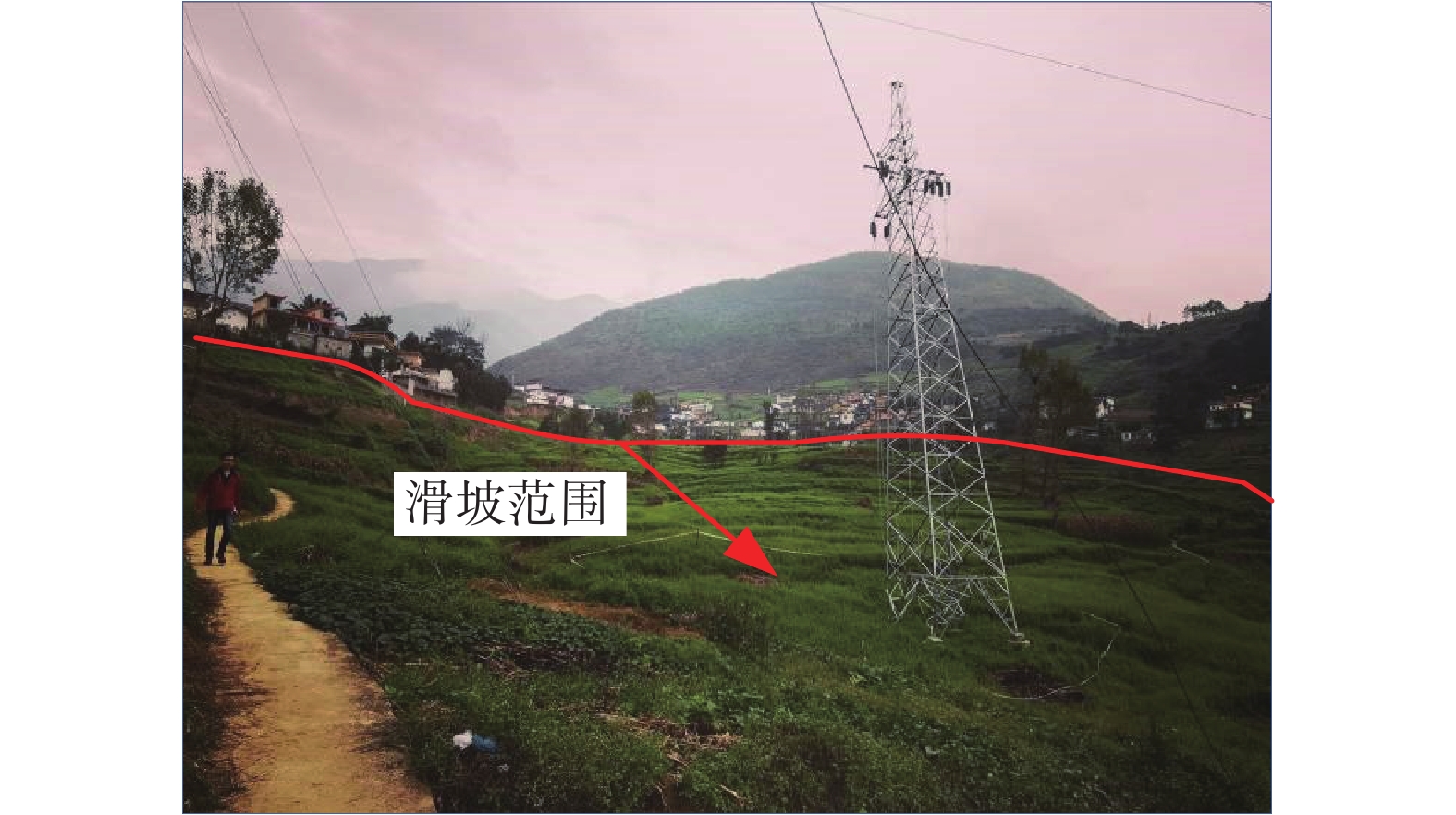
 下载:
下载:















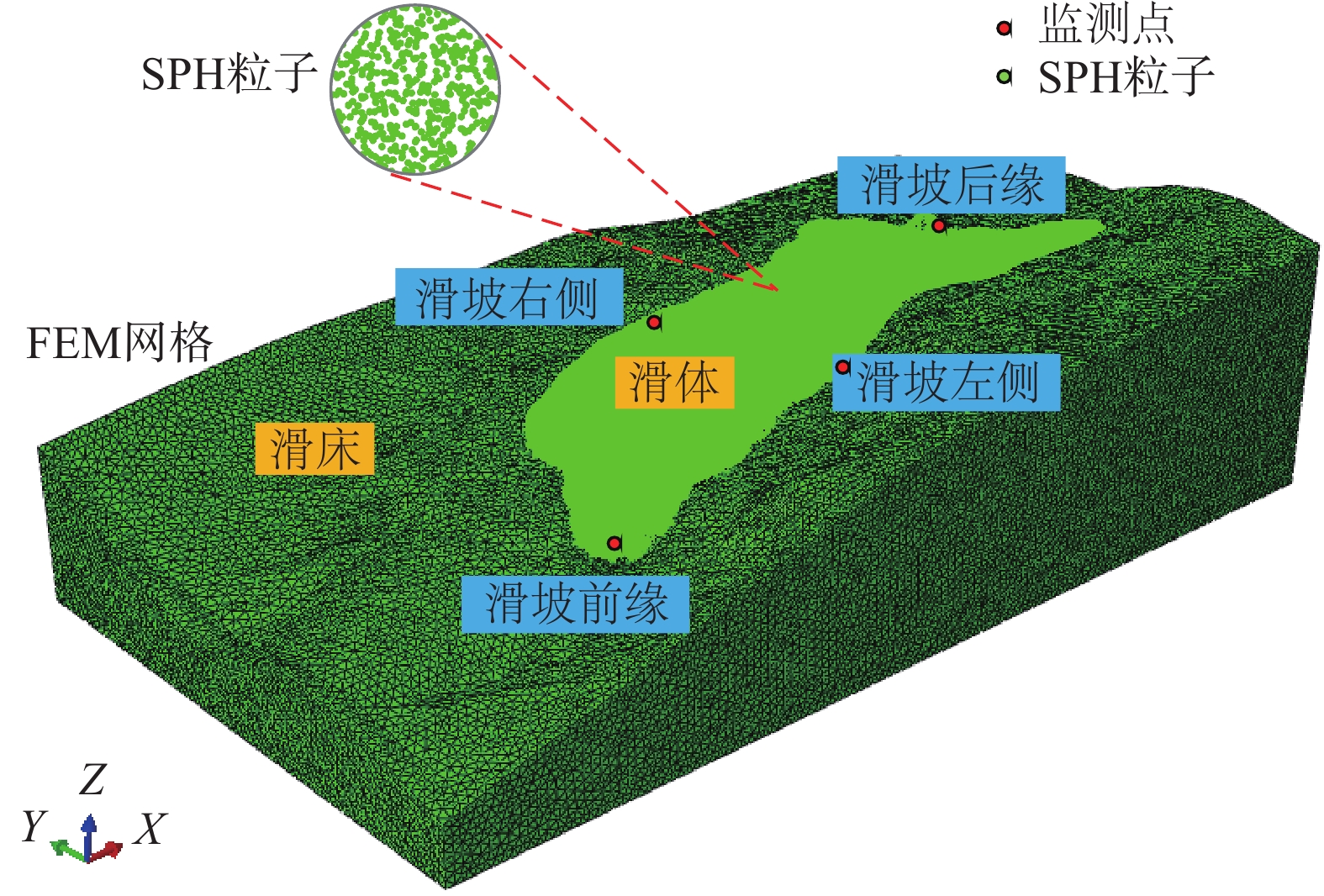





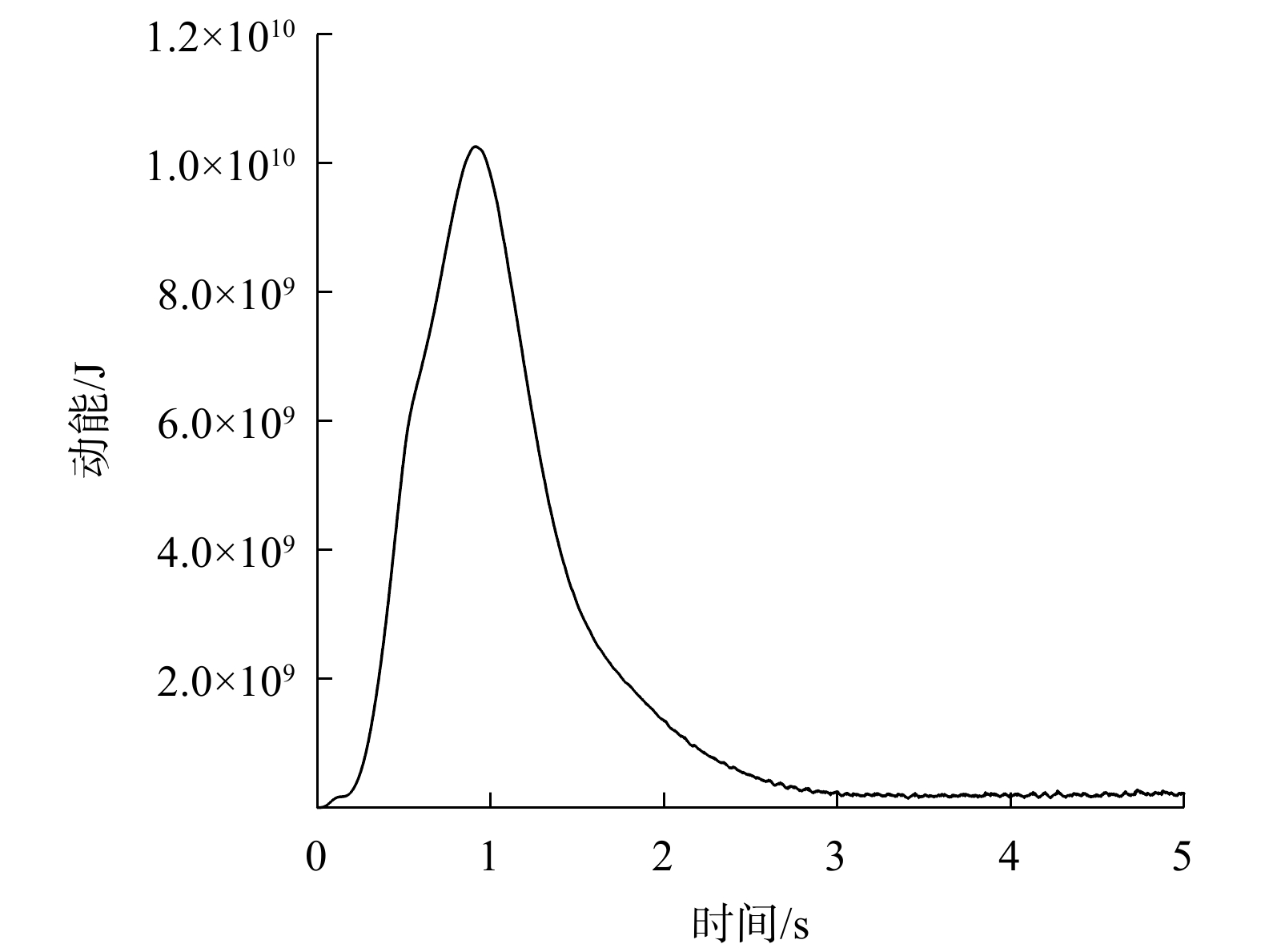

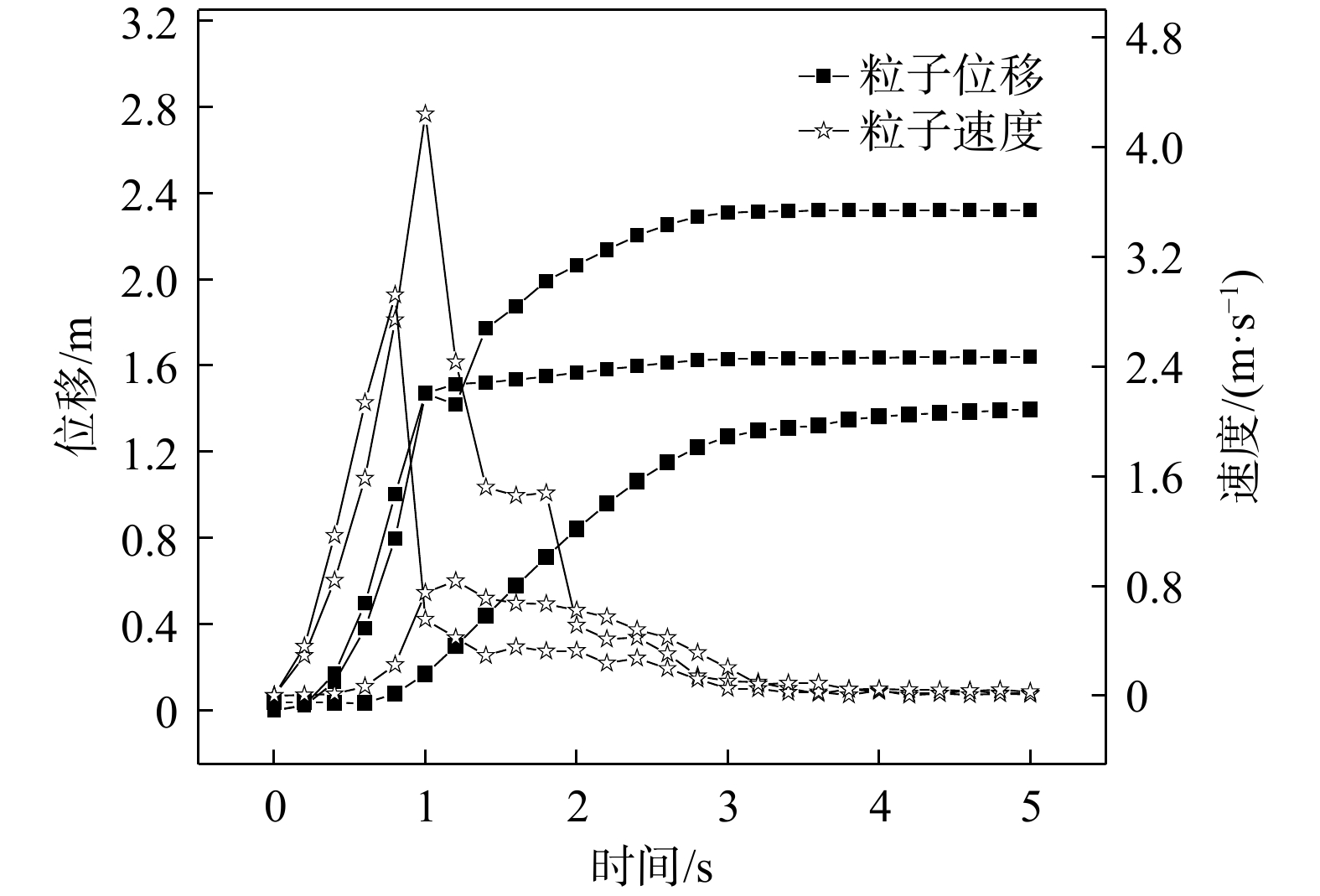
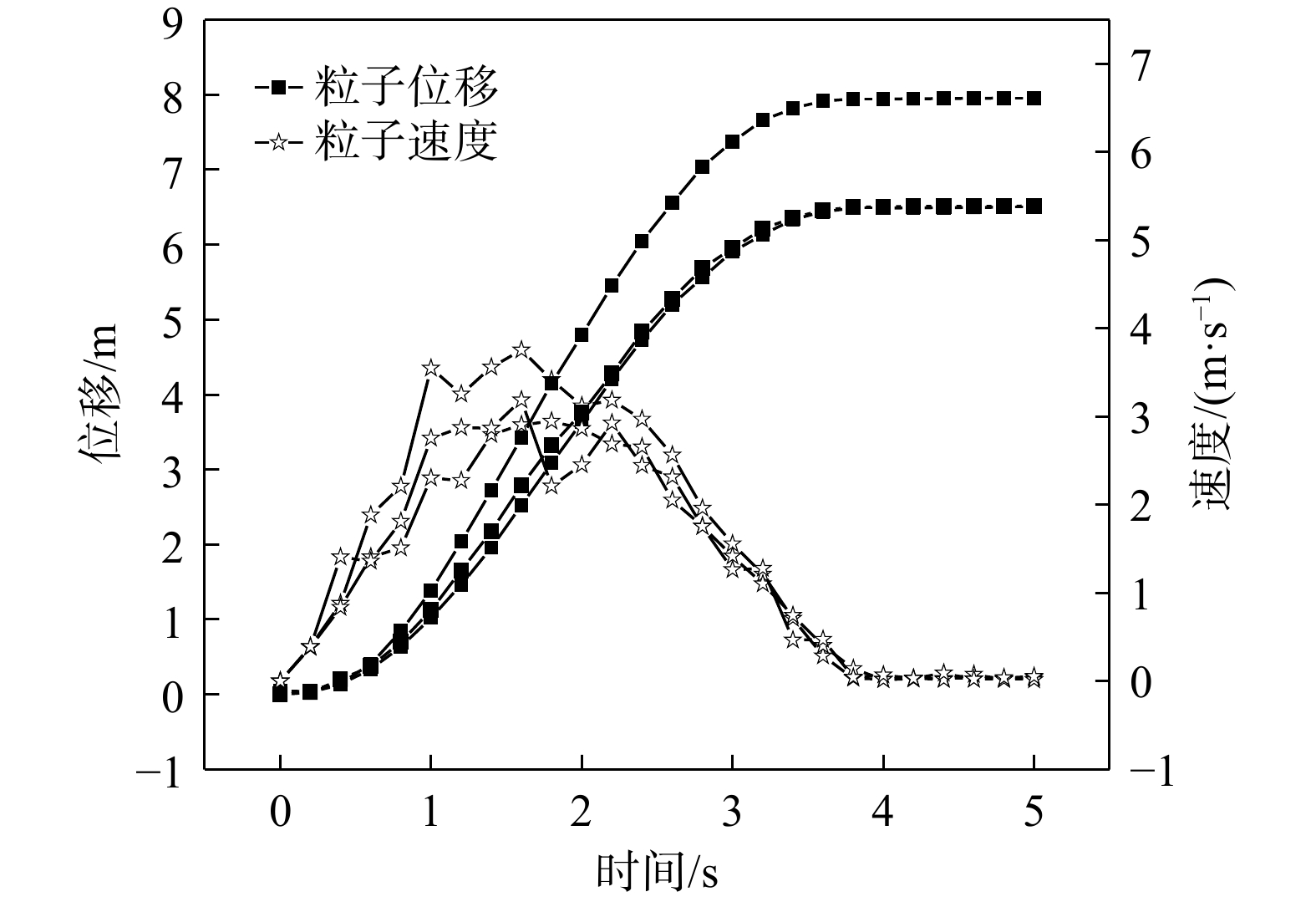
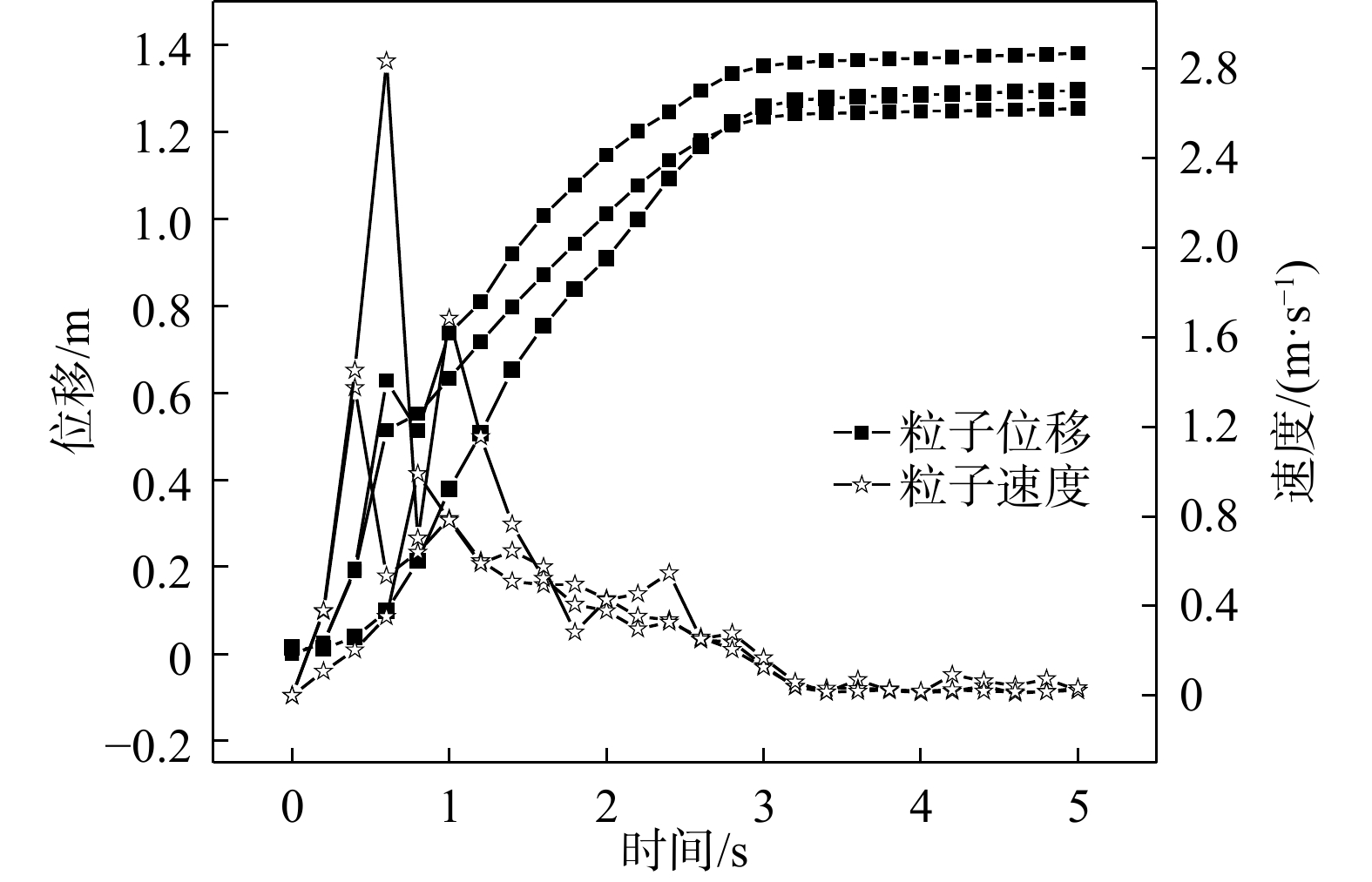
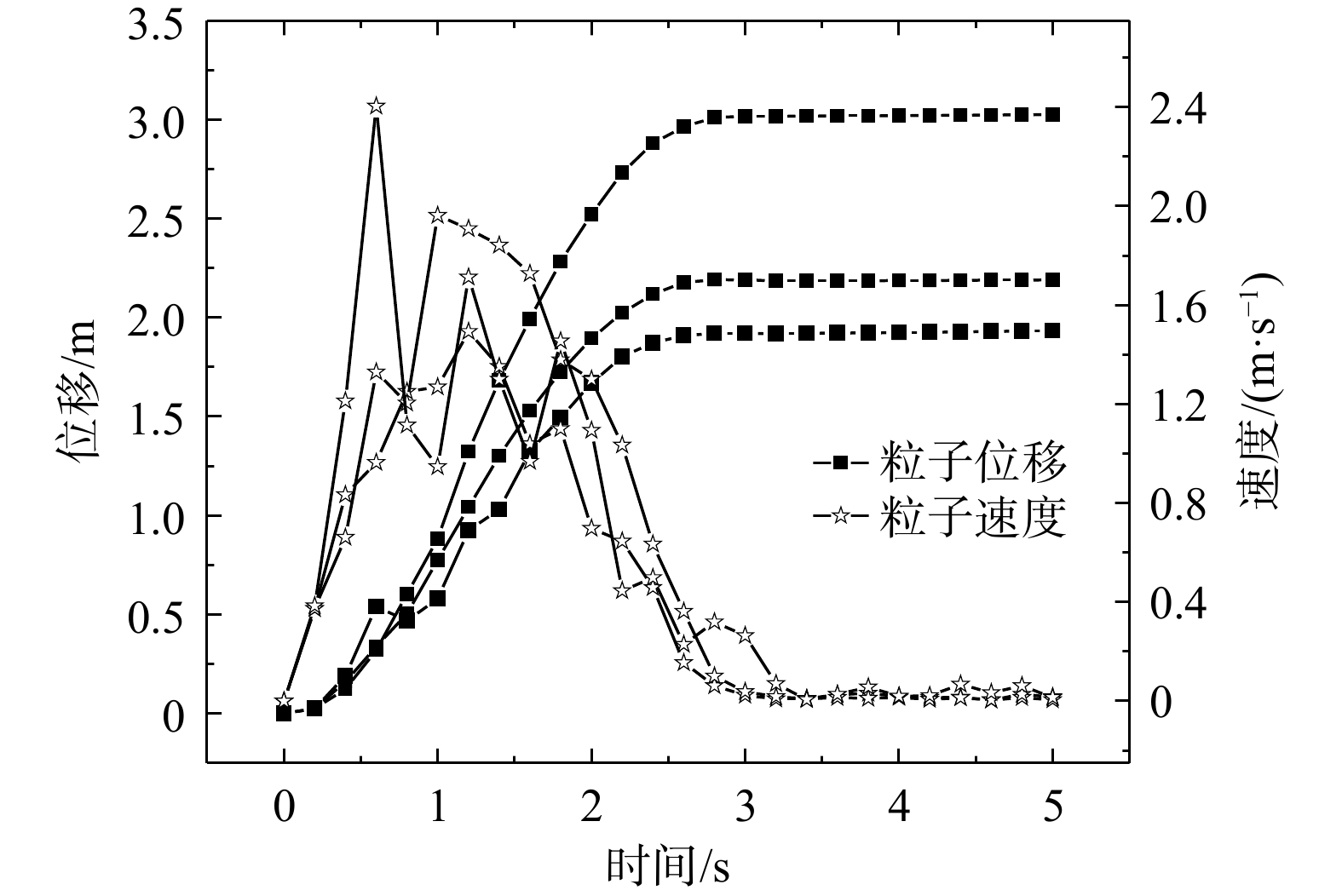
 邮件订阅
邮件订阅 RSS
RSS